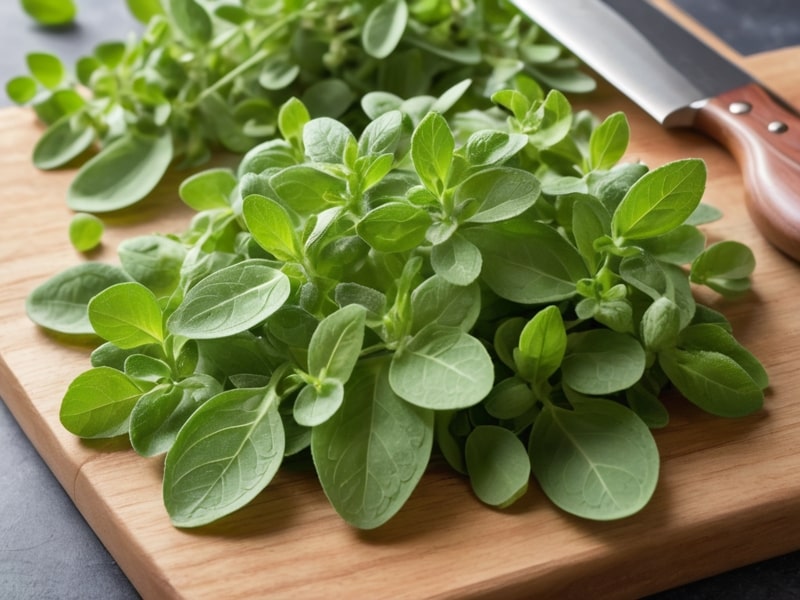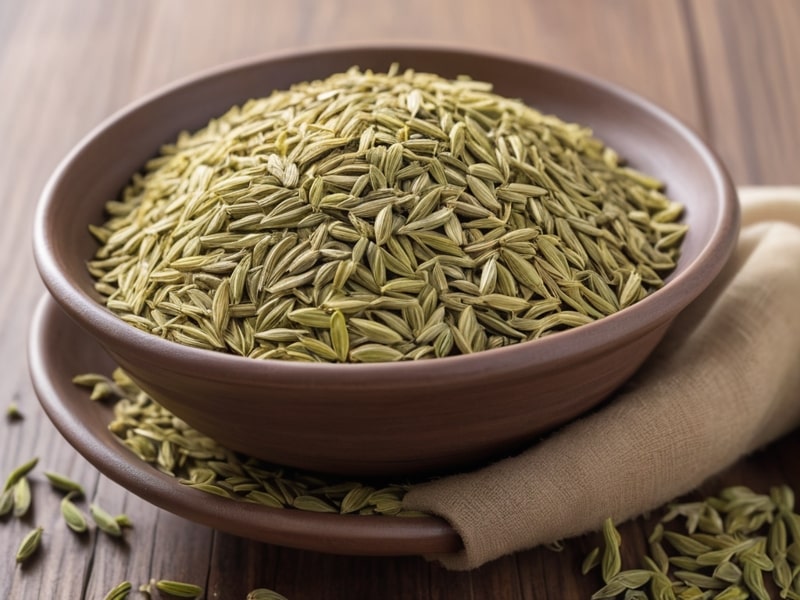Last updated on December 19th, 2024 at 11:28 am
For millennia, marjoram has been a superstar in both culinary and medical traditions. Yet, this delicate, sweet, and slightly citrusy herb often gets overshadowed by its bolder cousin, oregano. (No shade to oregano—it’s great—but marjoram brings a different kind of magic to the table.) Not only does it elevate dishes with its nuanced flavor, but it’s also packed with health benefits like anti-inflammatory, digestive, and immune-boosting powers.
In this guide, we’ll dive into marjoram’s fascinating history, nutritional perks, cooking tips, and even some advice on how to grow your own. So whether you’re a kitchen pro, a gardening enthusiast, or just someone trying to add a little natural goodness to your life, marjoram deserves a spot in your routine.
What is Marjoram?
Marjoram (Origanum majorana) is a perennial herb and proud member of the mint family (Lamiaceae). Native to the sunny Mediterranean, it’s been cultivated for thousands of years across Europe, the Middle East, and North Africa. Marjoram thrives in warm climates, and its oregano-like leaves can be used fresh or dried in recipes and herbal remedies alike.
In the kitchen, marjoram’s delicate flavor is the quiet hero that makes soups, stews, sauces, and meats shine. It’s especially beloved in Mediterranean and Middle Eastern cuisines, but don’t be surprised if you spot it in some creative modern dishes too.
Beyond the stove, marjoram has long been celebrated for its therapeutic properties. Ancient civilizations like the Greeks and Romans believed it symbolized happiness and love, using it in religious ceremonies and traditional remedies. (Honestly, marjoram sounds like the overachiever of the herb world, doesn’t it?)
History of Marjoram
Marjoram’s roots run deep—like, thousands-of-years deep. The Egyptians, Greeks, and Romans all revered this herb for its culinary and medicinal prowess. In ancient Greece, marjoram was associated with Aphrodite, the goddess of love, and newlyweds wore crowns of it to symbolize happiness and harmony.
The Romans took things up a notch, adding marjoram to their food, wine, and even fragrances. Doctors like Galen and Pliny the Elder praised it for treating everything from upset stomachs to coughs.
By the Middle Ages, marjoram had spread across Europe, where it became a go-to remedy for headaches, insomnia, and asthma. By the 16th century, it had secured its spot in both the kitchen and the medicinal garden.
Marjoram vs. Oregano: What’s the Difference?
Marjoram and oregano are like siblings—similar but not the same. They’re often confused, but each has its own vibe:
- Flavor: Marjoram is the sweet, floral one with subtle citrus notes, while oregano is the bold, earthy one with a bit of a spicy kick. Think of marjoram as the peacemaker that complements delicate dishes, while oregano brings the drama.
- Cooking: Oregano shines in pizza, pasta, and grilled meats, especially in Mexican, Italian, and Greek cuisines. Marjoram, on the other hand, is perfect for lighter dishes like soups, salads, veggies, and poultry.
- Substitutions: You can swap one for the other, but proceed with caution—oregano’s strong flavor can easily steal the spotlight. If you’re subbing oregano for marjoram, use a lighter hand to keep the balance.
Nutritional Information of Marjoram
Marjoram isn’t just tasty—it’s a tiny powerhouse of nutrients. Even in small amounts, it offers a range of vitamins and minerals that can support a healthy diet. Here’s the nutritional breakdown for one tablespoon (2g) of dried marjoram:
- Calories: 4
- Carbohydrates: 1g
- Protein: 0.2g
- Fiber: 0.8g
- Fats: 0.1g
- Vitamin A: 2% of the RDA
- Vitamin K: 6% of the RDA
- Calcium: 3% of the RDA
- Iron: 2% of the RDA
- Magnesium: 1% of the RDA
Marjoram is especially rich in vitamin K, a key player in bone health and blood clotting. It also offers small but valuable amounts of vitamin A, calcium, iron, and magnesium.
Key Nutrients in Marjoram:
- Vitamin A: Promotes eye health, skin repair, and immune function.
- Vitamin K: Essential for strong bones and proper blood clotting.
- Calcium: Supports healthy bones and teeth (bonus points for daily use!).
- Iron: Helps carry oxygen in the blood and boost energy levels.
To explore the benefits, uses, and nutritional value of Fennel Seeds, check out this detailed guide on Tweechi.
Culinary Uses of Marjoram

Marjoram really shines in the kitchen thanks to her versatility. Whether used fresh or dried, this herb enhances a wide variety of dishes. With roots in Mediterranean, Middle Eastern, and even some Western cuisines, her mild, sweet flavor fits perfectly into many recipes. Here are some classic ways to use marjoram:
1. Seasoning for Soups and Stews
1. Seasoning for Soups and Stews
Marjoram is like the quiet hero in soups and stews, especially ones with vegetables, chicken, or beans. It adds a gentle sweetness and depth without overpowering the other flavors. Think Mediterranean lentil soups, tomato-based stews, or cozy chicken broths. Pro tip: add marjoram near the end of cooking so it doesn’t lose its delicate flavor from the heat.
Recipe Idea:
For a heartwarming soup, try this: toss lentils, tomatoes, garlic, onions, and marjoram into a pot. The marjoram balances out the earthy lentils and the tang of the tomatoes, making every spoonful a little bit of magic.
2. Herb for Meat Recipes
Whether it’s chicken, lamb, pork, or veal, marjoram’s subtle flavor works wonders with meat. It’s perfect for marinades, rubs, or sauces—enhancing the meat’s natural flavor without taking center stage.
Recipe Idea:
Try Marjoram and Lemon Grilled Chicken: Marinate chicken breasts with olive oil, fresh marjoram, lemon juice, and garlic. Grill until juicy and tender. The marjoram pairs beautifully with the lemon, giving it a fresh, aromatic zest.
3. Vegetable Flavoring
From root veggies to leafy greens, marjoram can elevate just about any vegetable. Its light, sweet taste highlights the natural flavors of veggies without the need for overpowering spices.
Recipe Idea:
For a simple yet stunning dish, roast carrots, potatoes, and zucchini with olive oil, marjoram, salt, and pepper. Roast until caramelized and tender. Marjoram’s fragrance is like a secret ingredient that brings out the vegetables’ natural sweetness.
4. Improving Salad Dressings
Add fresh marjoram to vinaigrettes or salad dressings for a gentle herbal kick. It’s especially great in Mediterranean-style salads—think tomatoes, cucumbers, olives, and feta. Marjoram just makes everything taste better.
Recipe Idea:
For a light, zesty dressing, whisk together olive oil, white wine vinegar, Dijon mustard, minced marjoram, salt, and pepper. Drizzle over a simple salad of mixed greens and cherry tomatoes, and voilà—instant upgrade.
5. Marjoram in Baking
While marjoram is more commonly found in savory dishes, it can also be a surprising addition to breads, biscuits, and savory baked goods. Pair it with olive oil or cheese, and it gives baked goods a distinctive, fragrant flavor.
Recipe Idea:
For a savory twist, try adding fresh marjoram and grated Parmesan cheese to your biscuit dough. The marjoram’s delicate aroma enhances the richness of the cheese, making each bite absolutely irresistible.
6. Teas and Infusions
Marjoram isn’t just for food—it’s also fantastic in a calming cup of tea. Known for its ability to soothe the digestive system, ease headaches, and promote relaxation, marjoram tea is the perfect bedtime drink.
Recipe Idea:
Steep one or two teaspoons of dried marjoram leaves in boiling water for 5-10 minutes. Strain, then sip away, adding honey or lemon if you like. It’s the perfect soothing drink before hitting the hay.
Health Benefits of Marjoram

Marjoram isn’t just a superstar in the kitchen—it’s a powerful medicinal herb with a treasure trove of health benefits. Whether you sprinkle it on your food, brew it into a tea, or use its essential oil, marjoram has the potential to boost your overall well-being. Let’s dive into some of its remarkable health perks:
Natural Anti-Inflammatory Properties
Marjoram contains compounds that help reduce inflammation in the body, making it a helpful ally for managing conditions like inflammatory bowel disease, arthritis, or asthma. Think of it as a gentle, herbal way to soothe internal aches and pains.
2. Digestive Aid Extraordinaire
Long celebrated for its digestive benefits, marjoram supports your stomach by encouraging the production of digestive enzymes. These enzymes help break down food efficiently, improving nutrient absorption. For indigestion, bloating, or flatulence, a cup of marjoram tea can work wonders.
3. Immune System Support
With a healthy dose of vitamin C and flavonoids, marjoram strengthens your immune system while protecting against free radical damage. Regular use of marjoram may even reduce the duration of colds and respiratory infections—making it your immune system’s new best friend.
4. A Natural Relaxation Remedy
Feeling stressed or having trouble sleeping? Marjoram’s calming properties make it an excellent choice for reducing anxiety and promoting relaxation. Whether you sip marjoram tea before bed or use its essential oil for aromatherapy, this herb can help you unwind, improve sleep quality, and achieve restful nights.
5. Respiratory Health Booster
Traditionally used for treating coughs, bronchitis, and asthma, marjoram acts as a natural expectorant. It helps clear mucus from the respiratory tract, easing breathing and providing relief from chest congestion.
6. Heart Health Hero
Marjoram’s anti-inflammatory and antioxidant qualities are good news for your heart. It may help lower blood pressure, improve circulation, and reduce the risk of heart disease. Adding marjoram to your diet regularly could be a small yet powerful step toward better cardiovascular health.
7. Antimicrobial and Antibacterial Power
Thanks to its natural antimicrobial and antibacterial properties, marjoram helps combat infections and supports overall health. It’s like having a little herbal shield against harmful pathogens.
For more on marjoram’s health benefits and uses, visit this informative article on Healthline here.
Growing Marjoram Right at Home

Marjoram is a versatile herb, perfect for both culinary and wellness purposes. If you’re lucky enough to include it in your herb garden, you’ll find that it’s not only easy to grow but also an excellent addition to your kitchen and health routine.
Growing Marjoram
Whether your garden is spacious or compact, marjoram thrives with minimal care. Here’s how to grow it successfully:
Growing Conditions
- Light: Marjoram loves full sunlight. Ensure it’s planted in a spot that receives plenty of direct light.
- Soil: Well-draining soil with a pH of 6.7 to 7.0 is ideal.
- Watering: Keep the soil slightly moist but avoid overwatering, as soggy soil can harm the roots.
- Temperature: Marjoram thrives in warm climates and doesn’t tolerate frost. In colder regions, grow it annually or indoors in containers.
Harvesting Tips
- Marjoram is ready for harvest 6-8 weeks after planting, usually when it begins to flower.
- Use fresh leaves immediately, or dry them for later use. To dry, hang stems upside down in a cool, dry area until the leaves are crisp.
How to Store Marjoram
Proper storage ensures you can enjoy marjoram’s flavor and benefits year-round:
Fresh Storage
- Wrap fresh marjoram in a damp paper towel and store it in the refrigerator for up to one week.
- Alternatively, place the stems in a glass of water for easy access.
Dried Storage
- After drying, crumble the leaves and store them in an airtight container in a cool, dark place. Dried marjoram retains its flavor for up to six months.
Freezing Marjoram
- For long-term storage, freeze fresh leaves in ice cube trays filled with olive oil or water. Use a cube as needed to infuse dishes with flavor.
Marjoram in Cooking and Wellness
Marjoram is more than just a culinary herb—it’s a health booster! Its sweet, slightly peppery flavor enhances countless dishes, while its medicinal properties offer numerous health benefits.
Culinary Uses
- Marjoram pairs beautifully with chicken, lamb, seafood, and vegetables.
- It’s a favorite in soups, stews, marinades, and Mediterranean dishes.
Health Benefits
- Anti-Inflammatory Properties: Helps reduce inflammation in the body.
- Digestive Aid: Supports healthy digestion and relieves bloating.
- Immune Support: Strengthens immunity with vitamins and antioxidants.
FAQs About Marjoram
1. Is marjoram the same as oregano?
No, marjoram is sweeter and milder than oregano, making it ideal for delicate dishes.
2. Can I substitute oregano for marjoram?
Yes, but oregano has a stronger flavor. Use less oregano to avoid overpowering your dish.
3. Can dried marjoram replace fresh marjoram?
Absolutely! Dried marjoram is more concentrated. Use about one-third of the amount of fresh marjoram in recipes.
4. What dishes go well with marjoram?
Marjoram shines in chicken, lamb, seafood, and vegetable dishes. It’s also popular in Mediterranean and Middle Eastern cuisines.
5. How should marjoram be stored?
Fresh marjoram lasts up to a week when refrigerated with a damp paper towel. Dried marjoram should be kept in an airtight container in a cool, dark place.
Final Thoughts
Marjoram is a humble yet extraordinary herb that enhances your meals and health. Whether you use it fresh or dried, its unique flavor and wellness benefits make it a must-have in your kitchen. From soups and stews to marinades and sauces, marjoram transforms ordinary dishes into extraordinary creations.
So, why wait? Start growing, cooking, and reaping the benefits of marjoram today—it’s an investment in both flavor and health!



